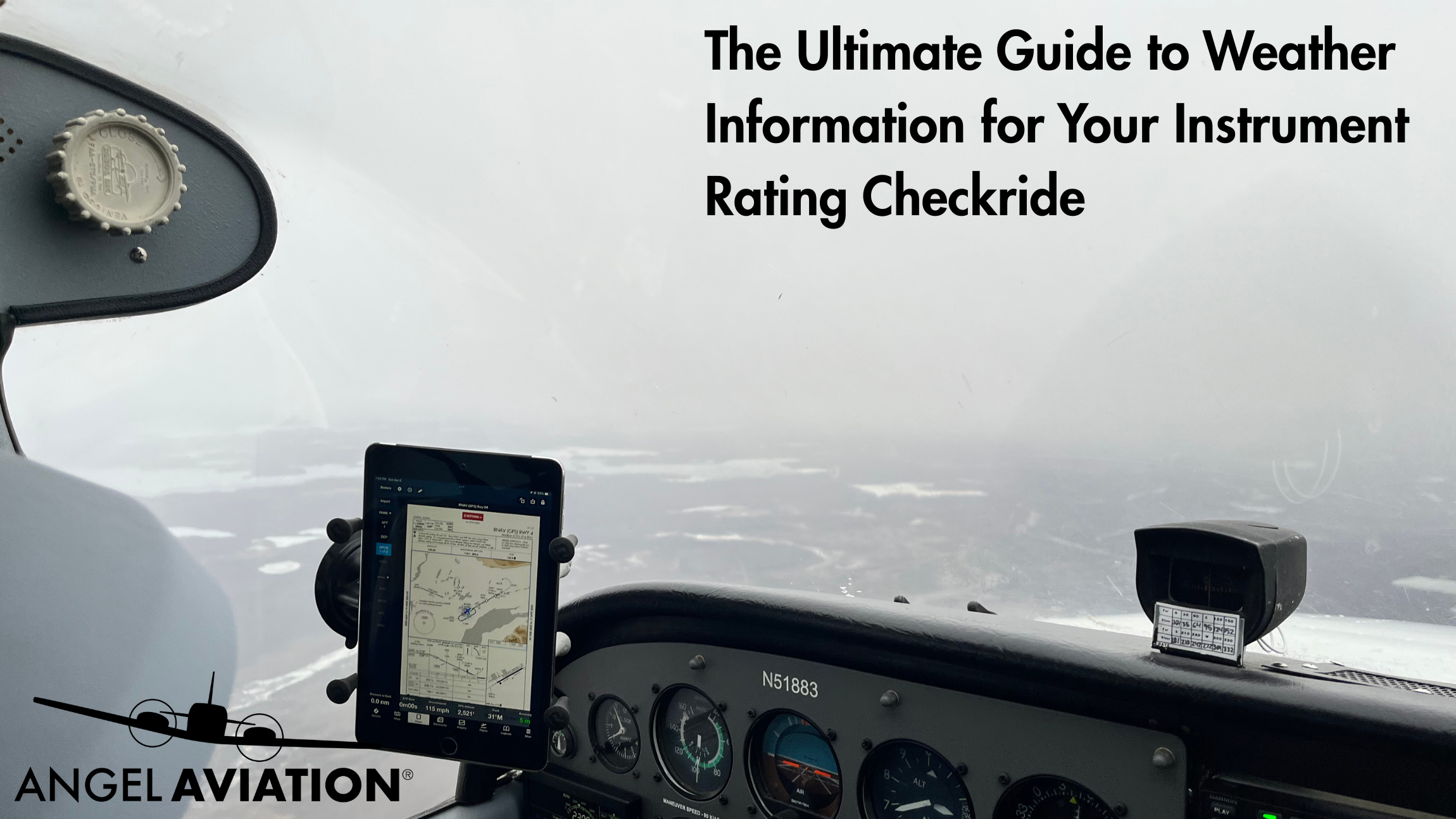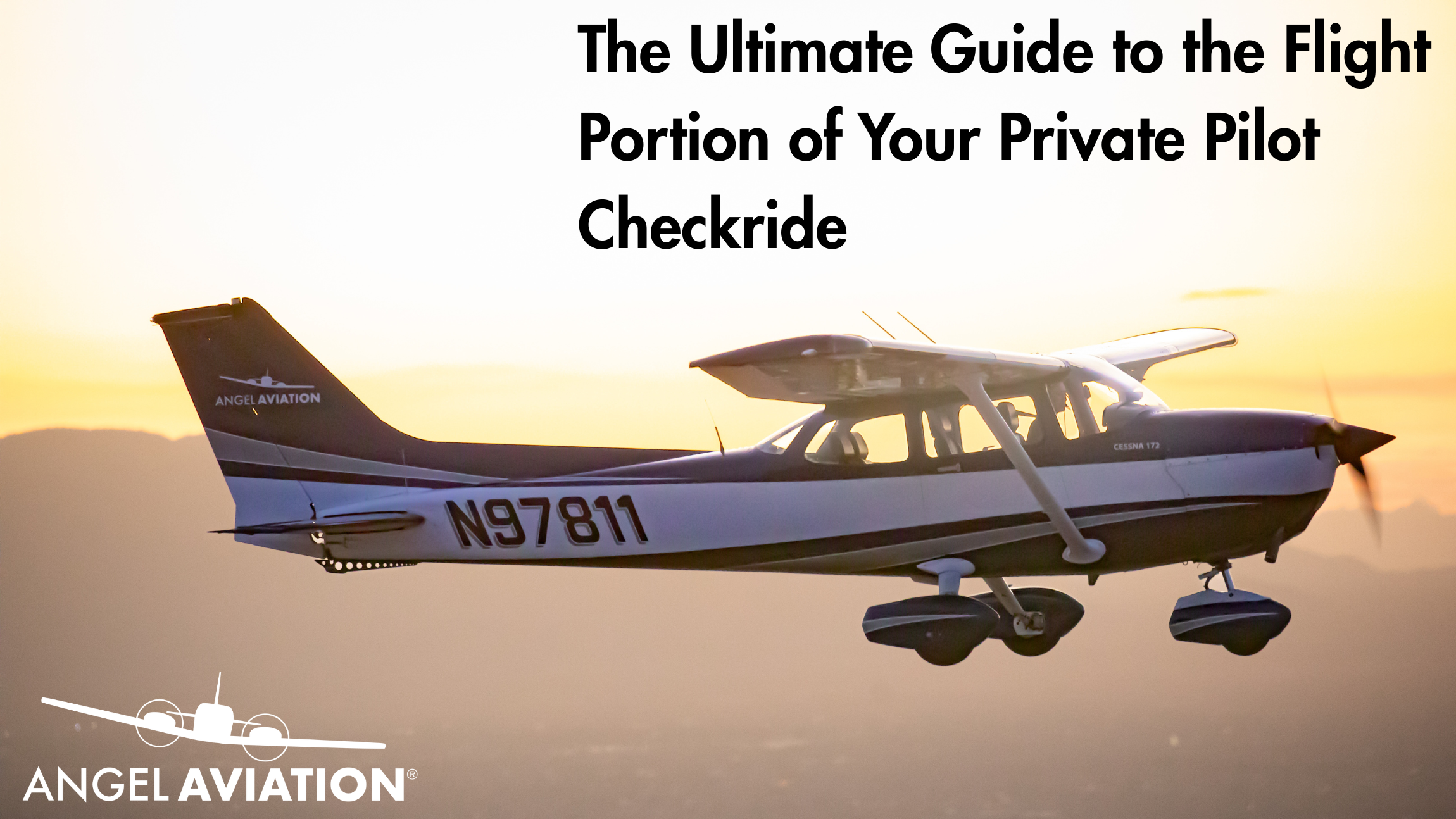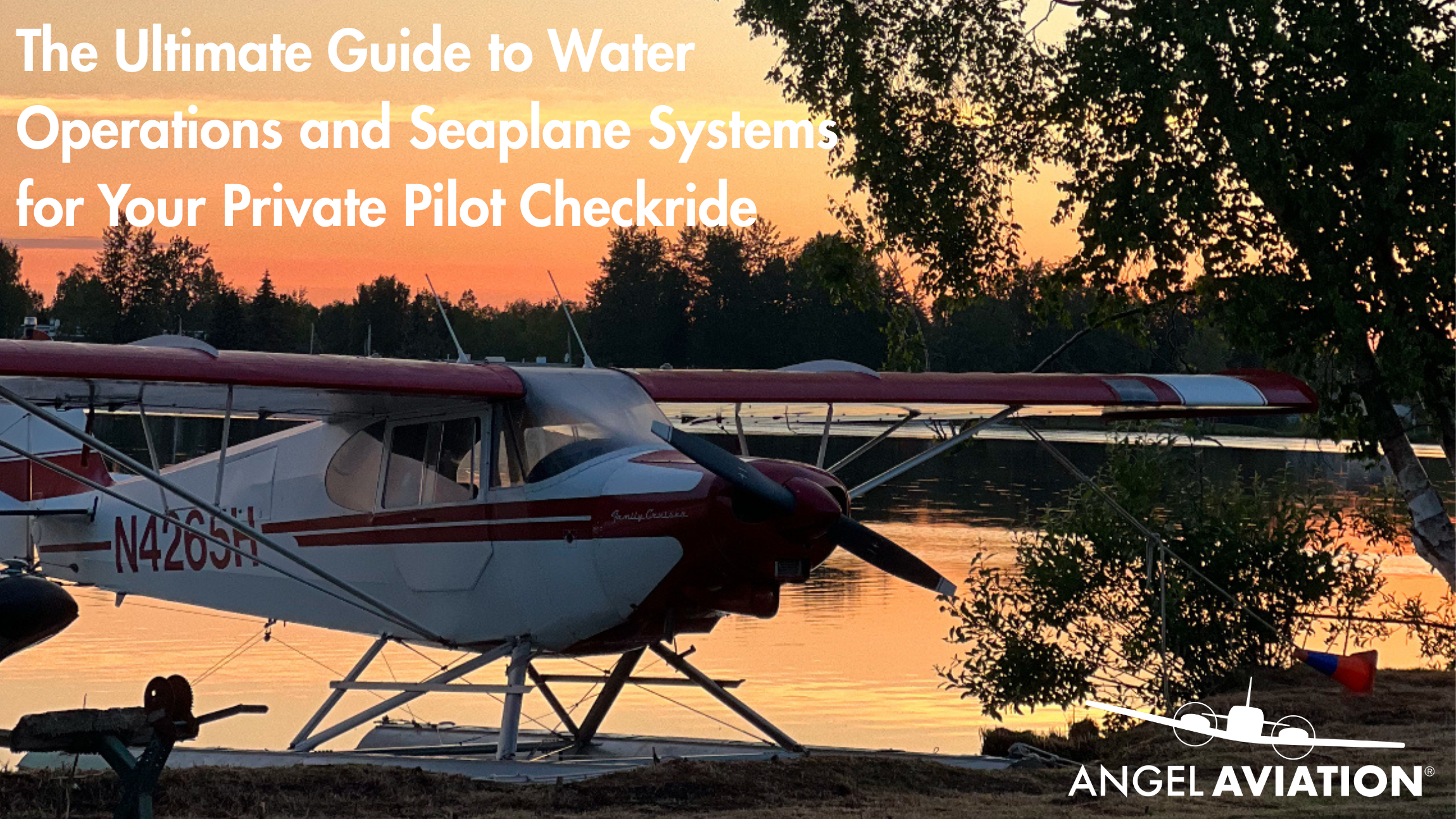At Angel Aviation, we believe cross-country planning isn’t just about drawing a line on a chart — it’s about making real-world decisions as an IFR pilot. Before you shoot an approach or hold over a VOR, your DPE is going to want to know: Did you plan your route legally, safely, and with IFR logic?
This guide breaks down ACS Area V: Cross-Country Flight Planning for the Instrument Rating. We’ll cover route selection, filing, alternates, fuel planning, NOTAMs, and weather — so you’re 100% ready for your checkride and real-world IFR flights.
🎯 What the Examiner Is Looking For
Under Instrument Rating ACS Area V, your examiner will evaluate whether you can:
- Plan a complete IFR cross-country flight using current weather and NOTAMs
- File a legal IFR flight plan with proper routing and alternates
- Select appropriate enroute, alternate, and destination airports
- Brief the route using IFR charts and plates
- Calculate performance, fuel requirements, and time en route
- Explain reroute, diversion, and in-flight decision-making
Let’s walk through the steps your DPE expects you to cover — and how to nail each one.
🧭 IFR Route Planning: Build a Smart, Legal Route
📚 Ref: FAA-H-8083-15B, §91.169
✅ Start with your departure and destination airports
✅ Use preferred routes (FAA Chart Supplement or ForeFlight suggestions)
✅ Avoid restricted/prohibited airspace unless authorized
✅ Choose transitions/airways to connect fixes and VORs
✅ Be ready to explain why you chose this route over others
💡 Angel Tip: Build a primary and backup route. Show you’re thinking ahead like a real IFR pilot.
🗂 Filing the Flight Plan
📚 Ref: §91.169, FAA Chart Supplement
Make sure your IFR flight plan includes:
- Departure/destination/alternate airports
- Route (airways or GPS waypoints)
- Cruising altitude (based on MEA, weather, and aircraft performance)
- Estimated time en route and fuel onboard
- Aircraft equipment suffix
- PIC information and contact info
✅ File via FSS (1800WXBRIEF), ForeFlight, or other FAA-approved method
✅ Always check for “Expect routing via…” notes on preferred route charts
✈️ Alternate Airport & Minimums
📚 Ref: §91.169(c)
You must file an alternate unless:
- Destination TAF shows at least 2000’ ceiling and 3 SM visibility within 1 hour of ETA
Your chosen alternate must meet:
- 600/2 for a precision approach
- 800/2 for a non-precision approach
- VFR from MEA if no approaches are available
💡 Angel Tip: Pick an alternate with an ILS and good fuel — the examiner wants to see solid reasoning, not just legal minimums.
⛽ Fuel Planning
📚 Ref: §91.167
For IFR flights, you must have enough fuel to:
✅ Fly to your destination
✅ Fly to your alternate (if required)
✅ Fly for 45 minutes after that at normal cruise
Be able to calculate fuel burn using POH data, and be ready to explain your numbers.
🌦️ Weather & NOTAMs
You’ll need to demonstrate that you checked:
✅ METARs and TAFs for all airports
✅ Winds aloft
✅ AIRMETs, SIGMETs, and PIREPs
✅ Enroute and airport NOTAMs
✅ Freezing levels, convective activity, and alternate weather
💡 Angel Pro Tip: The examiner might simulate a weather update and ask how you’d modify your plan. Show flexibility and decision-making.
🗺 Charts & Plates
Be able to interpret and brief:
✅ Low Enroute Charts (Victor airways, MEAs, MOAs, restricted areas)
✅ Departure Procedures (DPs)
✅ STARs (Standard Terminal Arrival Routes)
✅ IAPs (Instrument Approach Procedures)
✅ Airport diagrams
Be ready to brief the departure, enroute, and arrival phases — clearly and professionally.
🧠 Questions You Might Hear
✅ “Why did you choose this route instead of direct?”
✅ “Is an alternate required for this flight?”
✅ “Can you legally depart with the current TAF?”
✅ “How much fuel are you carrying, and what’s your burn rate?”
✅ “What if you lose comms after your clearance?”
✅ “How would you divert if this airport went IMC?”
🔍 Bonus: Cross-Country Must-Know Regs & Resources
- §91.103 – Preflight action
- §91.167 – IFR fuel requirements
- §91.169 – IFR flight plan and alternates
- §91.183–185 – IFR communication and clearance rules
- AIM 5-1-8 – Preferred IFR routes
- FAA Chart Supplement – Routing, frequencies, procedures
🧾 Final Thoughts from Angel Aviation
Cross-country planning on your instrument checkride is about thinking like a PIC. When the weather turns marginal or ATC reroutes you midflight, your preparation is what keeps you safe and efficient. Knowing how to build, brief, and back up your plan shows your DPE you’re ready to fly in the system — not just pass the checkride.






Leave A Comment